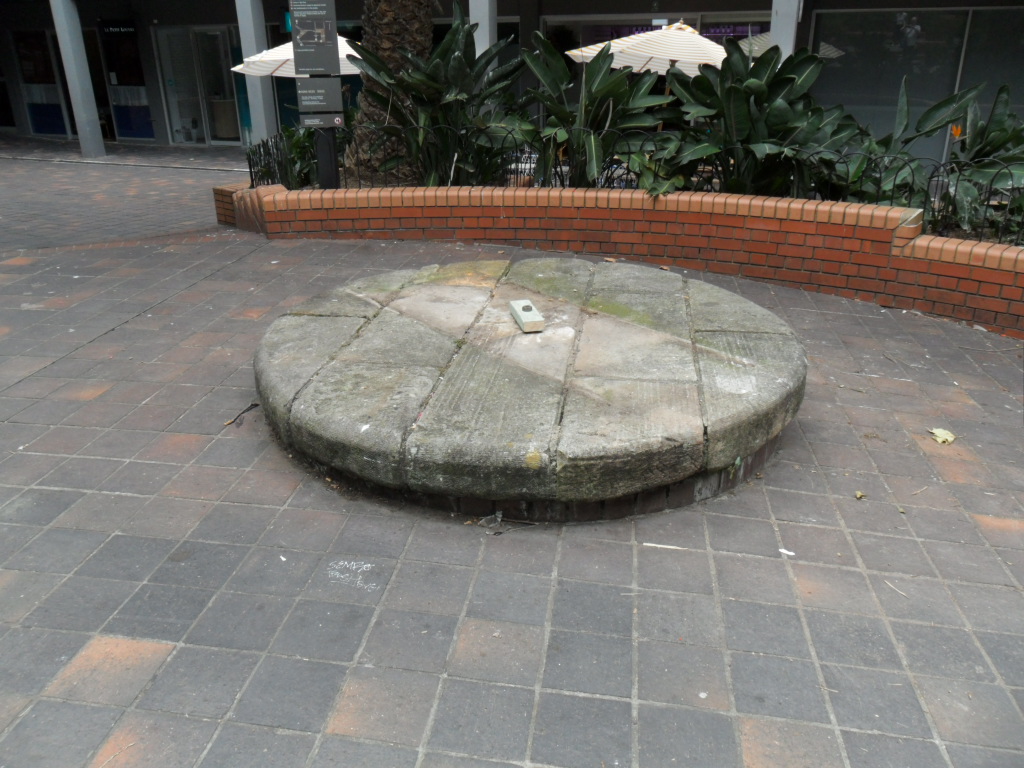Baxter’s legal tribulations – Springfield Mall

Springfield Mall, running east-west from Llankelly Place to Springfield Avenue, Potts Point, was once part of Alexander Macduff Baxter’s 1828 nine-acre grant.
Mr Baxter (1798-1836), was a Scottish barrister whose father was a respected local minister for 54 years.
Baxter was fluent in French with a “good general education” whose father helped him obtain an overseas post here in Sydney.
In 1826 he was nominated for the post of Attorney-General in New South Wales at a salary of £1,400.
The posting tuned into controversy.
He married a Spanish heiress, Maria del Rosaria Anna Uthair and sailed with her in the “Marquis of Hastings”, arriving in July 1827.
He cut a great dash in colonial society, lavishly furnishing his home, and achieving some prominence at public functions.
Within two months, however, Governor Sir Ralph Darling reported to the Colonial Office that “Dandy” Baxter had never run a case before in his life, was totally inexperienced as a lawyer, incapable of addressing either the court or a jury, and helpless against other barristers. Undismayed, Baxter claimed an increase of salary and permission to rent more land to augment the 1,036 hectares on the Williams River, granted him on arrival.
Aware of his professional deficiencies as Attorney-General, Baxter leaned heavily at first on the Solicitor-General and then others for help. As his confidence increased, he acted by himself, but still failed to win the Governor’s confidence. At times the Chief Justice and the Colonial Secretary were left to draft bills for the Legislative Council themselves even after Baxter became a member in 1829.
When his daily blunders and extravagances continued to be reported to the Colonial Office, he threatened to sue the Governor for defamation. But Governor Darling persisted and compelled him to dismiss his staffer, a convict clerk, and reduced his daily allowance while he was dealing cases on circuit in the country.
In spite of Darling’s laments, Baxter was nominated in April 1830 for the post of second judge in Van Diemen’s Land (Tasmania). Confirmation of the appointment reached the colony from London in December and with great pleasure Baxter recorded his resignation as NSW Attorney-General.
Fourteen of the thirty-four Sydney legal practitioners signed a farewell address which reflected adversely on his professional standards.
In January 1831, after violent scenes in the Supreme Court where he charged senior officials with plotting his downfall, he took great pains to record his resignation as Attorney General eight days before taking refuge under the Insolvency Act.
Unable to live within his income, Baxter quarrelled with his wife and sought alcoholic consolation; he was a drunk.
When she presented him with twin daughters, he beat her with a poker and she retaliated with a carving knife.
When the girls were baptised into “the detestable faith” (Catholic) by Father Therry, Baxter took his young son and left her. He spent his last week in Sydney exchanging charges and counter-charges with his wife, whose hysterical complaints convinced Governor Darling that her destitution and mental breakdown merited financial help in returning her to England.
Baxter then sailed for Van Diemen’s Land in March 1831. On arrival, Sir George Arthur found him in “a high state of neurotic excitement and such a state that it would have been a violation of all public decency to have allowed him to take his seat on the Bench”.
By postponing his installation, however, Arthur virtually left the colony without a Supreme Court until this awkward constitutional impediment was eventually removed in August.
When Baxter returned to Tasmania from a trip to Sydney in October, he presented his credentials, accompanying them with a request for leave and an advance of salary to recoup his health and to rebut charges made in London against him by Darling.
Arthur welcomed the chance to be rid of him and, to prevent any dishonour to his government, proposed to advance him £400 if Baxter were to leave. However, Arthur took the precaution of entrusting this money to Daniel Cooper, a Sydney merchant, who sailed from Hobart with Baxter in the “Duckenfield”.
In May 1832 Baxter’s death on the voyage was reported in Hobart papers incorrectly. He was then in London claiming that ill health had prevented him from taking office and seeking appointment in some other colony.
From July 1832 to August 1833 he was in Marshalsea prison for debt. He protested and claimed that “upon the death of a very old and infirm lady in Spain, I am by marriage entitled to property worth £14,000”.
From Whitby, Yorkshire, his wife was also persistent in appealing to the Colonial Office for the restoration of her jewels and furniture which had been seized in Sydney for her husband’s debts. He last appeal as a widow in 1836 had no success.
His legacy in Sydney was land including his land in Potts Point, including Springfield Lodge, now the site of the former Minerva Theatre in Orwell Street. He never enjoyed Springfield Lodge as his extravagant lifestyle caught up with him and he became bankrupt. Baxter eventually died at Onchan, a village on the Isle of Man, in 1834.
When the Springfield Estate was subdivided in the 1920s the villa gave its name to surrounding streets. Springfield House was demolished in 1934 to build the former Minerva Theatre, still standing.
Springfield was supposedly named after the communal spring located on the site with its potential ancient well cap recently revealed – see photo above.
However, a very recent archaeological study this week by Sydney Council combined with a map study shows this particular site was where workers’ cottages were situated and was not a well.
Old Sydney Town clearly was not all crinolines, parasols and sherry by gaslight.
By Andrew Woodhouse
Heritage Solutions





